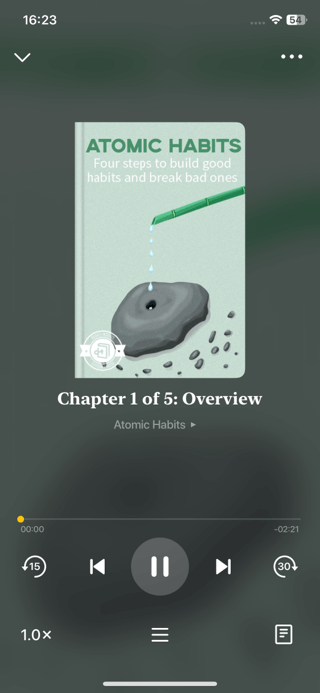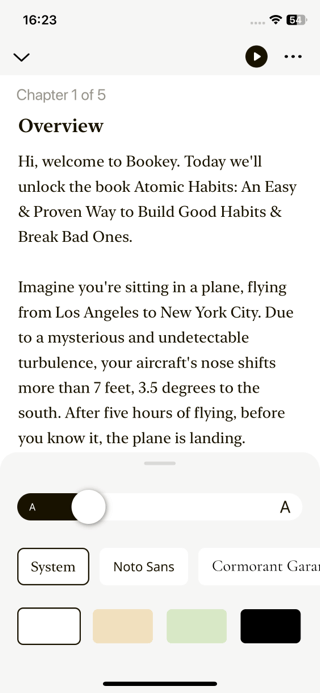Last updated on 2025/05/01
The Great Gatsby Summary
F. Scott Fitzgerald
The Illusion of the American Dream and Its Fallout
Last updated on 2025/05/01
The Great Gatsby Summary
F. Scott Fitzgerald
The Illusion of the American Dream and Its Fallout
Description

How many pages in The Great Gatsby?
180 pages
What is the release date for The Great Gatsby?
In the dazzling world of 1920s America, where the lush landscapes of wealth mask the emptiness of ambition, F. Scott Fitzgerald's "The Great Gatsby" invites readers into a mesmerizing tale of love, dreams, and the elusive nature of the American Dream. At the heart of this classic narrative lies Jay Gatsby, a mysterious millionaire whose extravagant parties and desperate pursuit of the beautiful Daisy Buchanan illuminate the hollowness behind the glittering façade of high society. Set against the backdrop of a society teetering on the brink of decadence, Fitzgerald weaves a poignant exploration of aspiration, disillusionment, and the insatiable quest for happiness, compelling readers to confront the stark realities that lie beneath the glamour of wealth and the shadows that haunt our deepest desires.
Author F. Scott Fitzgerald
F. Scott Fitzgerald, an American novelist and short story writer, is widely regarded as one of the most influential literary figures of the 20th century, particularly in the realm of American literature. Born in 1896 in St. Paul, Minnesota, Fitzgerald emerged as a prominent voice during the Jazz Age, a period characterized by cultural upheaval and changing social norms following World War I. His most famous work, "The Great Gatsby," published in 1925, explores themes of wealth, class, and the American Dream through the tragic story of Jay Gatsby and his mysterious past. Despite facing personal struggles, including battles with alcoholism and the complexities of his marriage to Zelda Sayre, Fitzgerald's incisive prose and keen observations of the human condition have left an enduring legacy that continues to resonate with readers today.
The Great Gatsby Summary |Free PDF Download
The Great Gatsby
Chapter 1 | 1
In the first chapter of "The Great Gatsby," we are introduced to the narrator, Nick Carraway, who reflects on his upbringing and the lessons he learned from his father about withholding judgment. This philosophy shapes Nick's character as he navigates the complex social world of early 20th-century America. After returning from World War I, Nick moves from the Midwest to New York to work in the bond business, feeling restless and eager for new experiences. He rents a modest home in West Egg, a wealthy village on Long Island, where he is surrounded by opulence. Nick reveals that his mysterious neighbor is Jay Gatsby, a man encapsulated by dreams and hopes, who becomes central to the story. Nick describes Gatsby as possessing a unique energy and romanticism, contrasting sharply with the insincere world around him. Shortly after settling in, Nick visits his cousin Daisy Buchanan and her husband, Tom, at their impressive home in East Egg. Daisy is charming yet troubled, and Tom exudes brute confidence with an air of superiority. The dinner at the Buchanans' is filled with underlying tensions. We meet Jordan Baker, a professional golfer, who adds to the intrigue of the evening. Through casual conversations, we glimpse the dissatisfaction and emotional turmoil of the characters, with Tom revealing a troubling racial ideology, hinting at societal unrest. Daisy, despite her elegance, expresses a sense of disillusionment, revealing that she hopes her daughter will be a "fool" – a comment laden with cynicism about the world they inhabit. As the evening unfolds, Nick learns of Tom’s infidelity, suggesting trouble in the Buchanans' marriage. The chapter ends with a striking image of Gatsby standing alone, reaching out towards a distant green light, symbolizing his unattainable dreams and desires. This encapsulates one of the novel's central themes: the pursuit of the American Dream and the illusion that accompanies it. Through vivid descriptions and keen observations, Fitzgerald sets the stage for a tale of love, ambition, and the moral chaos of the Jazz Age, leaving readers curious about Gatsby’s enigmatic character and the events that will unfold.
Key Point: Withholding judgment helps foster understanding and empathy.
Critical Interpretation: As you navigate your own complex social world, remember Nick Carraway's father's advice about withholding judgment. This practice enables you to approach people with an open heart and mind, allowing you to see beyond surface appearances and societal facades. By embracing this philosophy, you cultivate deeper connections and understanding, ultimately enriching your own life while contributing to a more empathetic community. In a world often filled with quick judgments and superficial assessments, choosing to understand rather than criticize can lead to transformative relationships and personal growth.
Chapter 2 | 2
In Chapter 2 of "The Great Gatsby," we are introduced to a stark, bleak landscape known as the Valley of Ashes, situated between West Egg and New York City. This desolate area, characterized by its grey ash and derelict structures, serves as a backdrop to the chapter and is symbolically significant, representing the moral and social decay of the time. Amidst this grim setting, we encounter Doctor T.J. Eckleburg’s enormous eyes, which seem to watch over the emptiness—hinting at themes of observation and judgment. The narrative progresses when Nick Carraway, the narrator, accompanies Tom Buchanan, his wealthy friend, on a train to New York. Tom insists they stop at this valley to meet his mistress, Myrtle Wilson. Tom’s possessiveness and arrogance are evident when he forcefully drags Nick along, reflecting his domineering character. Myrtle, the wife of George Wilson—a mechanic who owns a small garage—exudes a certain vitality and seems appropriate for Tom, even though she lacks beauty. Inside the garage, we glimpse Myrtle's unhappy marriage; her relationship with George is defined by her contempt for his social position. Tom’s casual cruelty is further underscored as he openly flirts with Myrtle, disregarding the consequences of his actions. After a quick encounter, they leave to go to Tom's apartment in the city, where Myrtle has changed into a more provocative dress, showcasing her desire to escape her mundane life. The scene shifts to Tom's apartment, where the atmosphere grows increasingly chaotic as several guests arrive, including Myrtle’s sister, Catherine, and a couple named the McKees. The gathering becomes a raucous party filled with drinking, laughter, and conversation that also reveals deeper discontent. Myrtle's relationship with Tom is characterized by power dynamics as she attempts to assert herself among the company, revealing her insecurities and dissatisfaction with her life. As the evening progresses, the mood turns ugly. Myrtle provocatively mentions Tom's wife, Daisy, which ignites Tom’s fury. In a moment of violent passion, he strikes Myrtle, breaking her nose, which brings the party to an abrupt and brutal end. This moment encapsulates the tension and cruelty underlying his character, exposing the chaotic and deteriorating relationships in this world of wealth and superficiality. Through vivid descriptions and character interactions, Fitzgerald immerses us in the world of the 1920s, highlighting themes of love, chaos, and the clash of social classes. The chapter intricately weaves the stark realities of life in the Valley of Ashes with the decadent, yet hollow lives of the characters, setting the tone for the unfolding tragedy.
Chapter 3 | 3
In Chapter 3 of "The Great Gatsby," the vibrant social scene of Jay Gatsby's extravagant parties comes to life through the eyes of the narrator, Nick Carraway. Nick describes Gatsby’s mansion, which buzzes with guests who flit about like moths drawn to a flame of wealth and glamour. Each weekend, his house transforms into a center of opulence, complete with grand displays of food, elaborate decorations, and a lively orchestra, attracting people from all walks of life, many of whom are uninvited. This chapter illustrates the allure and chaotic nature of Gatsby's social gatherings, where the distinctions between guests blur, and connections remain shallow. Nick receives a formal invitation to Gatsby's party, which stands in contrast to most attendees who simply show up without an invitation. Dressed in white flannels, he navigates through the crowded garden, still feeling somewhat out of place among the revelers. Here he encounters Jordan Baker, a golfer with a cunning and self-assured demeanor who becomes a focal point for him amidst the chaos. Their conversations hint at deeper themes of appearance versus reality as they share whispers about Gatsby's mysterious past, including a rumor that he once killed a man or served as a German spy during the war. As night falls, the festivities intensify, with laughter and dance around Gatsby’s flourishing garden. Nick, while trying to find his elusive host, unexpectedly meets Gatsby himself, discovering him to be a surprisingly charismatic young man who gives off a sense of charm and reassurance. Gatsby’s mannerisms and his effort to connect with Nick illuminate his loneliness amid the ostentatious atmosphere of his parties. Nick's initial assumptions about Gatsby's character are challenged as he observes the man’s underlying loneliness and the elaborate mask he wears during these extravagant gatherings. Superbly embellished yet superficial, Gatsby's parties reveal themes of wealth, social stratification, and the American dream's hollowness. As the night continues, the revelers engage in various antics, emphasizing the excess and the debauchery rampant in this era. Amidst the chaos, a poignant moment occurs when Nick observes a late-night car crash, a metaphor for the careless lifestyle of many partygoers, and a foreshadowing of the tragedy to follow in the story. Ultimately, Nick's experiences at Gatsby's party serve as a lens through which the complexities of wealth, desire, and the search for identity emerge, laying the groundwork for deeper reflections on the American experience and the pursuit of happiness in a world marked by illusion and discrepancy.
Key Point: The allure of superficial connections
Critical Interpretation: As you navigate through life, consider the allure of superficial connections that often come with the glitz and glamour of social gatherings. Much like the guests at Gatsby's extravagant parties, you might find yourself drawn to people who promise excitement and stimulation but offer little depth in terms of connection. This chapter inspires you to seek authenticity over mere appearances, reminding you that true fulfillment lies not in the superficiality of social scenes, but in nurturing meaningful relationships that enrich your life. Embrace the beauty of genuine connections, and strive to look beyond the masks people wear, for it's in the depth of true companionship that you will find the true essence of happiness.
Chapter 4 | 4
In Chapter 4 of "The Great Gatsby," we witness the vibrant world surrounding Jay Gatsby as he entertains a motley crew of partygoers at his lavish estate. The chapter opens with a depiction of Sunday morning, where the guests return to Gatsby's home, full of rumors about his mysterious past—whispers of bootlegging, wealth, and even murder swirl among the attendees. Nick Carraway, the narrator, reflects on the parade of eccentric characters he encountered during the summer, emphasizing how little they know about their host. One day, Gatsby unexpectedly invites Nick to lunch. His grand car, a symbol of his wealth, comes to collect Nick, and they embark on a somewhat awkward ride. Gatsby reveals snippets about his past, claiming he hails from wealthy parents who are now deceased, and he was educated at Oxford. Nick feels skeptical, sensing Gatsby's discomfort and inconsistency in his story, particularly regarding his prestigious education. As Gatsby shares tales of his extravagant life—hunting, collecting jewels, and war heroics—Nick struggles to reconcile the glamorous facade with the hints of something sinister lurking beneath. During their ride, Gatsby reveals he has a request involving Daisy Buchanan, Nick's cousin and Gatsby’s former lover. His desire to reconnect with her hints at a deeper purpose behind his ostentatious lifestyle. As they arrive in the city, Gatsby introduces Nick to Meyer Wolfsheim, a character whose shady dealings and connections to organized crime raise more questions about Gatsby's social circles and wealth. The lunch scene with Wolfsheim further adds to the mystery. Wolfsheim’s anecdotes about fixing the World Series expose the darker underbelly of Gatsby's world. Their meeting is interrupted, and Gatsby leaves abruptly, sparking Nick’s curiosity. The chapter closes with a recollection from Jordan Baker, who reveals to Nick that Gatsby bought his mansion across the bay from Daisy just to be near her. Gatsby's deep, unresolved longing for Daisy comes to light, and Nick gets drawn into Gatsby's grand plan to reunite with her. The themes of aspiration, the American Dream, and the complexity of relationships are woven throughout the narrative. Gatsby stands as a figure of hope and idealism, yet there’s an underlying thread of disillusionment and moral ambiguity in the world he has created. The chapter is rich with character development, showcasing Gatsby's vulnerability and the facade he maintains in his relentless pursuit of love and acceptance. Ultimately, it sets the stage for the impending reunion and the dramatic events that will unfold.
Chapter 5 | 5
In Chapter 5 of "The Great Gatsby," the atmosphere is charged with anticipation as Nick Carraway prepares for the long-awaited reunion between Jay Gatsby and Daisy Buchanan. Nick returns home to find Gatsby's mansion eerily illuminated, suggesting a mix of excitement and nervousness from Gatsby about the impending tea with Daisy. They engage in a conversation where Gatsby hints at a desire for change—evident in his nervousness and obsessive need for everything to be perfect for Daisy's visit, including having Nick’s lawn cut. The next day, under pouring rain, Nick prepares for Daisy's arrival, who is initially unaware of Gatsby's true feelings but seems excited nonetheless. In a moment of humor, Gatsby sends a man to cut Nick's grass, showing his desire to impress. As Nick hangs out with Gatsby, he senses the man's palpable anxiety and longing. When Daisy arrives, the atmosphere thickens with tension. Gatsby enters, nervous and pale, leading to an awkward initial greeting between him and Daisy. Gatsby's clumsiness in these moments highlights his deep emotional investments—both in Daisy and the idea of their reunion. Once the initial awkwardness fades, they share a more intimate moment where Gatsby begins to feel a sense of euphoria simply being near Daisy. This intensity shifts as they leave for Gatsby's mansion—Daisy admires its opulence, revealing Gatsby’s longing for acceptance and a life he has created in hopes of winning her back. The tour through Gatsby’s lavish home is filled with moments of admiration and nostalgia, especially when Daisy is overwhelmed by his beautiful collection of shirts. Her tears signify both joy and sadness, reflecting on the life that has passed since their love was interrupted. The chapter concludes with an emotional crescendo as they sit together, revealing Gatsby's transformation from an ambitious dreamer into a man filled with doubt about whether reality can truly meet the grand expectations he has built up around Daisy. The theme of illusion vs. reality surfaces prominently here, highlighting Gatsby’s struggle to reconcile his deep-seated dreams with the tangible present. As Nick observes their connection deepen, he senses Gatsby losing his grip on the romanticized vision he held of Daisy, while she also seems to become entranced by the moment despite the complexities it brings. Ultimately, this chapter encapsulates the delicate intersection of dreams and reality, love and heartache, encapsulated in one rainy afternoon.
Key Point: The importance of confronting one’s past and embracing vulnerability
Critical Interpretation: In the delicate dance of emotions that unfolds between Gatsby and Daisy, you witness the profound courage it takes to face your past and embrace vulnerability. Just as Gatsby nervously prepares for Daisy’s visit, revealing his deepest insecurities, you too are reminded that showing your true self, despite fears of rejection or judgment, can lead to authentic connections. This pivotal moment inspires you to confront your own past, to seek out those lost connections, and to understand that vulnerability isn’t a weakness but a path to meaningful relationships and deeper fulfillment.
Chapter 6 | 6
In Chapter VI of "The Great Gatsby," we delve deeper into the enigmatic past of Jay Gatsby, revealing his humble origins as James Gatz, the son of unsuccessful North Dakota farmers. Ambitiously seeking a better life, he changes his name at seventeen upon encountering the wealthy Dan Cody’s yacht, which becomes a turning point in his life. Gatsby serves as Cody’s assistant aboard the yacht, embodying the glamour and aspirations he craves, but this relationship ultimately leaves him with nothing but the drive to reinvigorate his identity. Following Cody's passing and the loss of an inherited fortune due to legal machinations, Gatsby's transformation into the affluent figure we know begins. Now living in West Egg, Gatsby’s fame has grown due to his lavish parties that draw elite crowds, despite rumors suggesting he is a bootlegger. One day, an ambitious reporter arrives at Gatsby’s doorstep seeking a story, reflecting the fascination surrounding him. However, Gatsby remains elusive about his life, leaving myths to swirl around him. He longs to win back Daisy Buchanan, his former love, whom he believes he can rekindle past passion with. The chapter also highlights an awkward encounter between Gatsby and Tom Buchanan, Daisy's husband, during a party at Gatsby’s home. Tom's disdain for Gatsby's world is palpable as he questions who Gatsby really is, suggesting he’s merely a common bootlegger. Nonetheless, Daisy's excitement contrasts sharply with Tom’s arrogance. As Gatsby tries to impress Daisy, it becomes evident that he hopes to recreate the past where they shared an intense, romantic connection. At Gatsby’s extravagant party, Tom's disapproval looms, dampening the evening’s atmosphere. Gatsby attempts to connect with Daisy, dancing with her serenely, but there’s an undercurrent of sadness as Daisy feels out of place amidst the revelry. The chapter accentuates the theme of unfulfilled dreams, as Gatsby clings to an idealized past and believes he can reclaim it. His obsession with recapturing those moments defines his character, ultimately leading to a sense of desperation. By the end of the chapter, Gatsby expresses a profound yearning to return to the past, highlighting the difficulty of moving forward and the unattainable nature of his dreams. The chapter concludes on a note of tension, as Gatsby disillusionedly interprets Daisy’s indifference as a failure of his grand plans, hinting at the looming conflict between his aspirations and the reality of his life.
Key Point: The importance of self-invention and ambition
Critical Interpretation: Consider Gatsby's journey from humble beginnings to immense wealth, spurred by his aspirations to redefine himself. This highlights the power of ambition and the belief that we can mold our identities and futures. In your own life, let Gatsby's transformation inspire you to embrace your dreams, work tirelessly towards your goals, and recognize that the pursuit of self-invention is not just a path to success, but also to self-discovery. Remember, the essence of who you are can be crafted by your choices and determination, much like Gatsby crafted his persona.
Chapter 7 | 7
In Chapter 7 of "The Great Gatsby," tensions peak as Gatsby's carefully curated facade starts to crumble. Rumors about him swirl, reaching a climax when his house goes dark one night. Concerned, Nick Carraway visits Gatsby, only to find that he has dismissed his staff, fearing they would gossip about Daisy, who visits him often. When Gatsby invites Nick to lunch at Daisy's house, the atmosphere is thick with unspoken tensions. As the heat of the summer day bears down, Nick finds himself intertwined in a complicated web of emotions. At Daisy's home, Gatsby stands in awe, clearly in love with Daisy, who in turn is flirtatiously playful, even kissing Gatsby in front of her husband, Tom. This moment ignites Tom's suspicion and jealousy towards Gatsby. The group feels the oppressive heat, mirroring the mounting pressure among them, with Daisy lamenting the staleness of her life. Tom, feeling threatened, pushes for a trip to New York to confront Gatsby. The drive is filled with tension; Tom knows something is amiss with Gatsby and probes into his past, revealing his disdain and mistrust. When they reach the Plaza Hotel, a heated confrontation occurs. Tom accuses Gatsby of being a fraud, elucidating the fact that Gatsby is involved in illegal activities, painting him as a bootlegger and revealing his insecurities. As tensions boil over, Gatsby declares that Daisy never loved Tom and always loved him instead. This confession sends shockwaves through the group. Tom retaliates, asserting that he has deeper connections with Daisy, and actually loves her despite their turbulent relationship. Daisy, caught between the two men, falters. Although she tries to assert her love for Gatsby, she’s unable to firmly reject Tom. The chapter crescendos with chaos when Gatsby's past is laid bare and domestic realities surface. Daisy admits she once loved Tom, which shatters Gatsby's dream. Just as he believes he can reclaim the past, the weight of reality crushes it. In the aftermath, Daisy and Tom leave together in Gatsby’s car, an ominous sign that their journey into a darker path is about to unfold. The chapter encapsulates themes of love, obsession, and the American Dream's disintegration, revealing the fragility of Gatsby's idealism against the harsh backdrop of social class and moral decay. Navigating through emotional upheavals, characters tread a line between dream and reality while the hot summer heat intensifies the pressure cooker of their intertwined fates.
Key Point: The fragility of dreams
Critical Interpretation: As you reflect on Gatsby's desperate pursuit of a past love and the fragility of his dreams, you are reminded that clinging too tightly to an ideal can lead to disillusionment. This chapter encourages you to cherish your aspirations but also to recognize the importance of grounding them in reality. It's a call to embrace the present and the people in your life, understanding that while dreams can inspire you, they must be balanced with the acceptance of the unpredictable nature of life and love.
Chapter 8 | 8
In Chapter 8 of "The Great Gatsby," the tension and tragedy reach a peak as Gatsby and Nick navigate the fallout of Daisy's decision and the desperate situation created by Tom Buchanan. Gatsby, afflicted by a deep sense of anticipation and dread, waits for Daisy's call following the devastating confrontation with Tom. The chapter opens with Nick's sense of sleep deprivation intensified by foghorns and unsettling dreams. He feels compelled to warn Gatsby, sensing the weight of what’s at stake. When Nick arrives at Gatsby’s mansion, he finds Gatsby in a state of dejection. He eagerly awaits news from Daisy but faces the grim reality that she canceled their plans. Their surroundings—Gatsby's now-musty and neglected home—symbolize the culmination of Gatsby's unreachable dreams. Gatsby shares the story of his youth with Dan Cody, revealing a longing for Daisy that has shaped his entire life. He recalls Daisy as his first true love, a beacon of wealth and beauty that he believed could elevate his existence. However, he is painfully aware of the gap between their worlds, feeling unworthy of her affection. As memories flood back, Gatsby reflects on the moments spent with Daisy, intertwining love and ambition. He recalls the combination of youth, mystery, and social privilege that encapsulated Daisy's life—a world he desperately longed to be part of. Yet, his idealism begins to crumble; the dream he pursued now feels like a mere illusion, especially after Daisy's prolonged absence. The chapter shifts to the immediate aftermath of Myrtle Wilson's tragic death. George Wilson, devastated and in a state of grief-stricken madness, suspects Gatsby's involvement when he finds a dog leash that Myrtle had bought. Fueled by pain and a desire for vengeance, he sets out to confront Gatsby. Back at Gatsby's, he waits in the pool, symbolizing a moment of both tranquility and impending doom. The atmosphere is charged, evoking both Gatsby's hope for Daisy's call and the darkness of his reality. When George finally tracks down Gatsby, the chapter descends into tragedy as George shoots Gatsby and then takes his own life. This chapter intricately highlights themes of love, loss, the corrupting nature of wealth, and the pursuit of unattainable dreams. Gatsby's idealism, once vibrant, is ultimately met with harsh reality, underscoring the novel's tragic inevitability and the American Dream's disillusionment. Nick's closing reflection—recognizing Gatsby's worth despite the rotten crowd surrounding him—illuminates the poignant isolation that accompanies Gatsby's relentless pursuit of love and acceptance. It's a haunting portrayal of ambition and tragedy, illustrating how dreams, particularly those intertwined with love and social status, can lead to perilous outcomes.
Chapter 9 | 9
In Chapter 9 of "The Great Gatsby," we find ourselves in the aftermath of Gatsby's tragic death, a day that stretches into an exhausting blur of police, journalists, and curious onlookers at his mansion. The community's interest quickly turns into speculative rumors that muddy Gatsby's legacy. Nick Carraway, the narrator, feels a deep sense of responsibility for Gatsby and is determined to honor his memory, but he finds himself increasingly isolated. Daisy Buchanan and Tom have fled without a word, leaving no one to mourn Gatsby except Nick. As Nick attempts to reach out to Gatsby's acquaintances for help, he faces disappointment. Even Gatsby's supposed best friend, Meyer Wolfshiem, sends a detached letter expressing his shock but declining to attend the funeral, showcasing the hollowness of their friendship and the loneliness surrounding Gatsby in death. This sense of abandonment magnifies as Nick realizes he cannot find anyone—save for a few disinterested servants and a postman—who cares enough to pay their respects. Gatsby’s father, Henry Gatz, arrives from Minnesota, overwhelmed and bewildered by his son's demise. His unwavering pride in Gatsby's achievements provides a poignant contrast to the attention Gatsby received in life versus the neglect he experiences in death. Mr. Gatz reminisces about Gatsby's ambitions and resolutions as a young man, revealing a tender side of Gatsby that no one else saw. On the day of the funeral, Nick waits expectantly for mourners, but only a small group arrives, including a disheartened man, known only as Owl Eyes, who had once marveled at Gatsby's library. They all share a collective sense of loss for a man they never fully understood. The ceremony takes place in a steady rain, symbolizing the somber tone and the uncelebrated nature of Gatsby's life and death. In the weeks that follow, Nick confronts Tom Buchanan, representing the careless elite who crushed Gatsby’s dreams. Tom’s inability to recognize the moral weight of his actions becomes painfully clear as he deflects responsibility for Gatsby’s death. Nick reflects on the recklessness of the wealthy, who, in their hubris, wreak havoc on those around them and retreat back into their privileged lives without remorse. As Nick prepares to leave New York, he contemplates Gatsby’s unyielding dream—the green light at the end of Daisy's dock representing hope and the endless pursuit of the American Dream. Nick realizes that Gatsby’s aspirations were ultimately unattainable, as he was doomed to be "borne back ceaselessly into the past.” The chapter closes with a reflective tone, emphasizing the struggle against the current of time and reality, illustrating how dreams, no matter how fervently chased, can slip away like sand. This final chapter encapsulates the profound themes of loss, the hollowness of the American Dream, and the poignant pursuit of an ideal that remains just out of reach, leaving readers with a haunting sense of nostalgia and melancholy for Gatsby's unfulfilled aspirations.
Key Point: The importance of genuine connections in upholding one's legacy
Critical Interpretation: As you reflect on Gatsby's funeral and the painful solitude that marked his death, you might be inspired to cultivate deeper, more meaningful relationships in your own life. Gatsby's tragedy serves as a poignant reminder that the quality of your connections is far more significant than the fleeting rumors and superficial acquaintances that surround you. By focusing on building authentic bonds with people who truly care, you create a legacy that is celebrated and cherished, rather than one that fades into obscurity, just like Gatsby's empty mansion after his passing.










